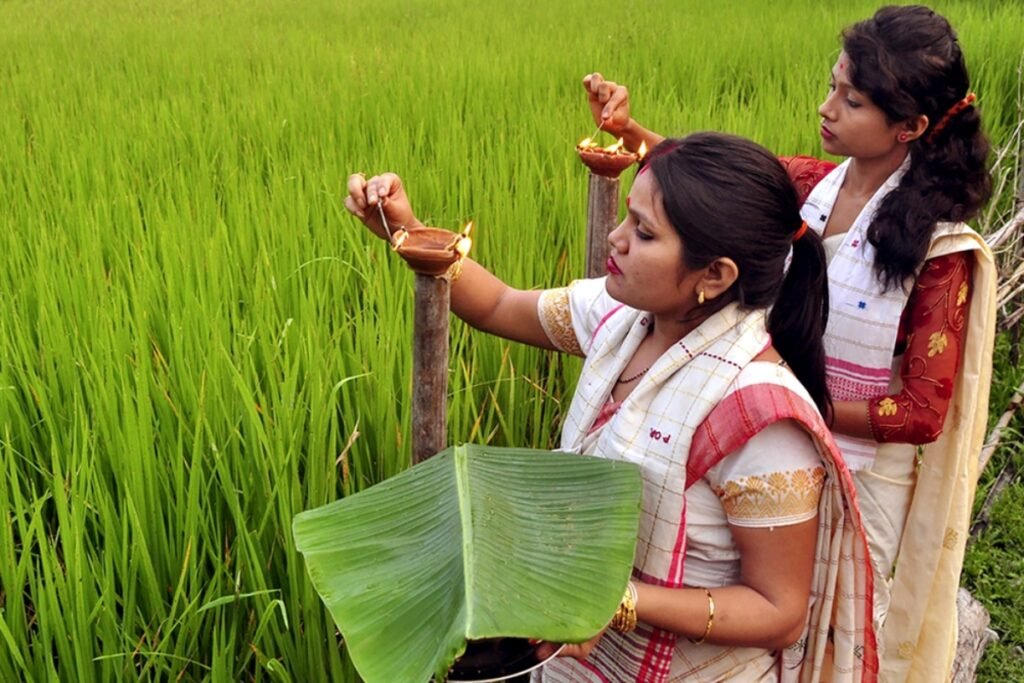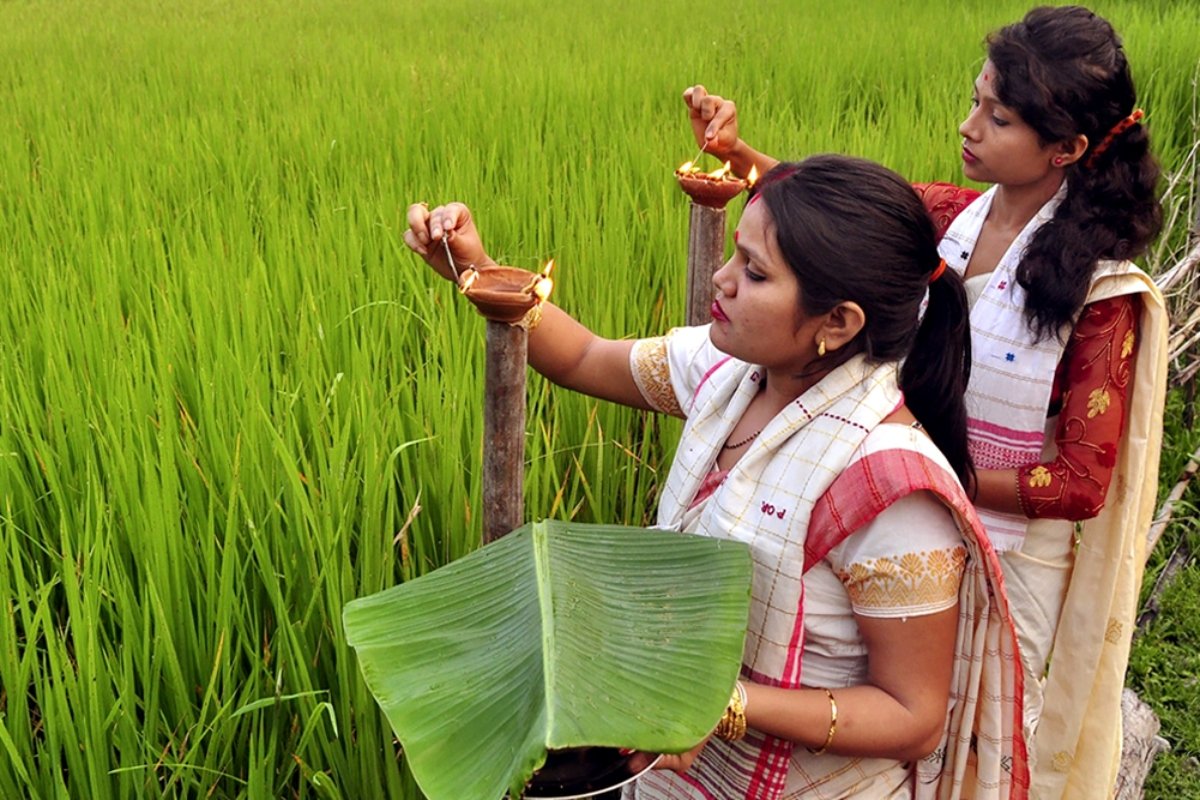Introduction: Unveiling the Essence of Kati Bihu 2023
Kati Bihu, a significant festival in Assam, symbolizes the resilience and gratitude of the agricultural community. Amidst the melodies of the Bihu dance and the whispers of the paddy fields, this festival holds a pivotal place in the cultural fabric of the region. With its unique customs and rituals, Kati Bihu embodies the spirit of perseverance and harvest.

Understanding the Origins of Kati Bihu 2023: Bridging the Past and Present
Rooted in the agricultural heritage of Assam, Kati Bihu heralds the beginning of the sowing season, representing a time of hope and anticipation. Its cultural significance lies in its homage to the earth and recognition of the crucial role played by farmers in sustaining the community. Lighting earthen lamps and offering prayers to deities signify reverence for nature’s bounty and the interconnectedness of life.
Customs and Traditions: Exploring the Vibrant Celebratory Practices
Kati Bihu entails a series of traditional rituals that blend spirituality with agrarian livelihood. The act of lighting ‘Akash Bonti’ or earthen lamps in the fields not only symbolizes the quest for a bountiful harvest but also showcases the collective resilience of the farming community. Additionally, the offering of ‘Johai’ to the cattle illustrates the harmonious relationship between humans and animals, highlighting the values of coexistence and harmony.
Socio-economic Impact: Kati Bihu as a Catalyst for Cultural Cohesion
Beyond its religious significance, Kati Bihu serves as a unifying force and a driver of economic prosperity within the Assamese community. It fosters a sense of solidarity and camaraderie, encouraging collective responsibility for the well-being of the farming population. Moreover, the festival provides a platform for local artisans and craftsmen to showcase their traditional skills, thus promoting the regional economy and preserving indigenous art forms.
Modern Interpretations: Relevance and Revival of Kati Bihu in Contemporary Contexts
In the face of globalization and shifting socio-cultural dynamics, Kati Bihu has transformed into a symbol of cultural resilience and identity. Its celebration transcends geographical boundaries, resonating with individuals who value agricultural sustenance and cultural heritage. The integration of technology and social media has further facilitated the global dissemination of the festival, amplifying its significance and fostering cross-cultural understanding.
Upholding Cultural Heritage: The Imperative of Preservation
Amidst the waves of modernity, preserving the cultural legacy embedded within Kati Bihu is crucial. Initiatives that raise awareness and appreciation for this festival should be encouraged, ensuring the transmission of its essence to future generations. By embracing the spirit of Kati Bihu, communities can uphold their rich traditions while embracing the complexities of contemporary living, striking a harmonious balance between tradition and modernity.
Conclusion: Embracing the Spirit of Kati Bihu
In essence, Kati Bihu goes beyond its role as a mere harvest festival, encapsulating the resilience, cultural vibrancy, and spiritual significance of the Assamese community. Its timeless traditions and celebratory customs resonate with the essence of human interconnectedness, emphasizing the harmony between humanity, nature, and the divine. As we embark on a journey of cultural preservation and evolution, let us cherish the spirit of Kati Bihu, nurturing its legacy for generations to come.
You may also love to read about Israel Gaza War. Click Here.





